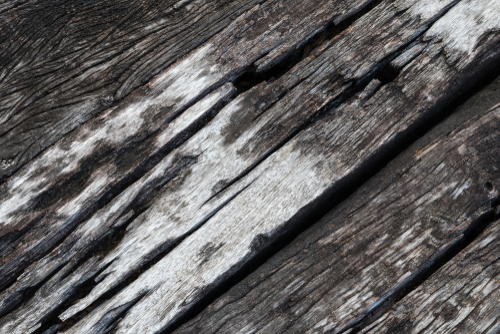Blog
Preventing Timber Decay and Rot

'Timber decay' are two words you do not want to hear a surveyor say when they are looking over your property. It brings to mind thoughts of extensive repairs and expensive treatments. There must be a better way; a way to prevent timber from reaching the point of repair or replace and a way to prevent panicked calls regarding treating dry rot or woodworm, right?
Thankfully, there are preventative methods that home and business premises owners can take to ensure their property is protected against invasive insects and structure damaging rot – it’s all about moisture.
Having worked in and around London for over 15 years, the Garratt’s Damp and Timber team have encountered and dealt with countless moisture concerns in a host of different settings. We specialise in addressing damp and timber decay quickly and effectively so, utilising this experience, we have put together a quick guide for you to deal with your own timber damage issues.
Causes of Timber Decay
Timber decay can be caused over time as wood increases in age, however, most causes of timber decay occur due to an increase in moisture or damp conditions. Damp and timber decay are intrinsically linked because moisture helps the spread of fungal infections like dry rot or wet rot and encourages nasty mould growth, both of which contribute to timber damage.
In particular, sub-floor timbers need a dry, well-ventilated environment that is generally provided at ground floor level with adequate sub-floor vents (airbricks). These need to be unobscured and unblocked to reduce the prevalence of damp and timber decay.
Leaks in roofs or penetrating damp through walls can cause timber decay over time, over-saturating wood fibres with water which offers an attractive place for wood-boring insects to lay their eggs. Note that whilst ensuring the safety of structures, keep an eye out for bowing or bending timer; not only is this structurally unsafe, but the physically damaged wood can also be an additional attractor for wood-boring insects so it's important to stay aware.
Preventing Timber Decay
Any external facing timber should be appropriately treated with waterproof paint or damp-proof membranes to prevent the ingress of water. Pay attention to seams or areas where two materials meet and water could collect. To prevent water on external walls, ensure gutters are cleared of any leaf litter or debris and check that connections are tight and rubber seals are in good repair where lengths of materials are joined.
Replace inefficient or broken extractor fans in bathrooms and kitchens to ensure warm, moist air is sufficiently removed and isn’t allowed to pool on wooden surfaces (like window frames). Upgrading to more modern humidistat fans is common practice and may prevent the need to use de-humidifiers in problem properties.
If your property is prone to condensation issues, consider having further ventilation installed via more modern, more efficient sub-floor vents (air bricks). Make sure that doors stay closed during a bath or shower to prevent moist air from moving throughout the property.
Moisture levels of only 20% and above create the perfect environment that leads to timber decay so it’s important to consider how moisture can get around within your property.
Don’t get stuck with expensive home repairs or renovations; by taking preventative measures you should be able to protect your home from the most common types of timber decay.
At Garratt’s Damp and Timber, we have worked with countless home and business owners to address deep-seated damp related issues. Whatever your problems, we can leverage our experience and knowledge to find the best and most suitable solution for you. If you think that you may have a problem with damp and timber decay, contact our team on 0208 535 7536 and organise a survey today.
Archived Articles
Recent
-
18 Mar 2024
How to Get Rid of Damp in Bedrooms
While it may seem more logical that kitchens and bathrooms are more prone to damp, it may be surprising for…
-
13 Nov 2023
Benefits of Tanking Your Basement
While basements have been a staple of home construction in multiple countries, they are still a relatively new concept in…
-
13 Nov 2023
Taking Action on Fixing Damp
Damp is a widespread problem in properties across the UK; however, this doesn’t stop the fact that it’s a serious…







